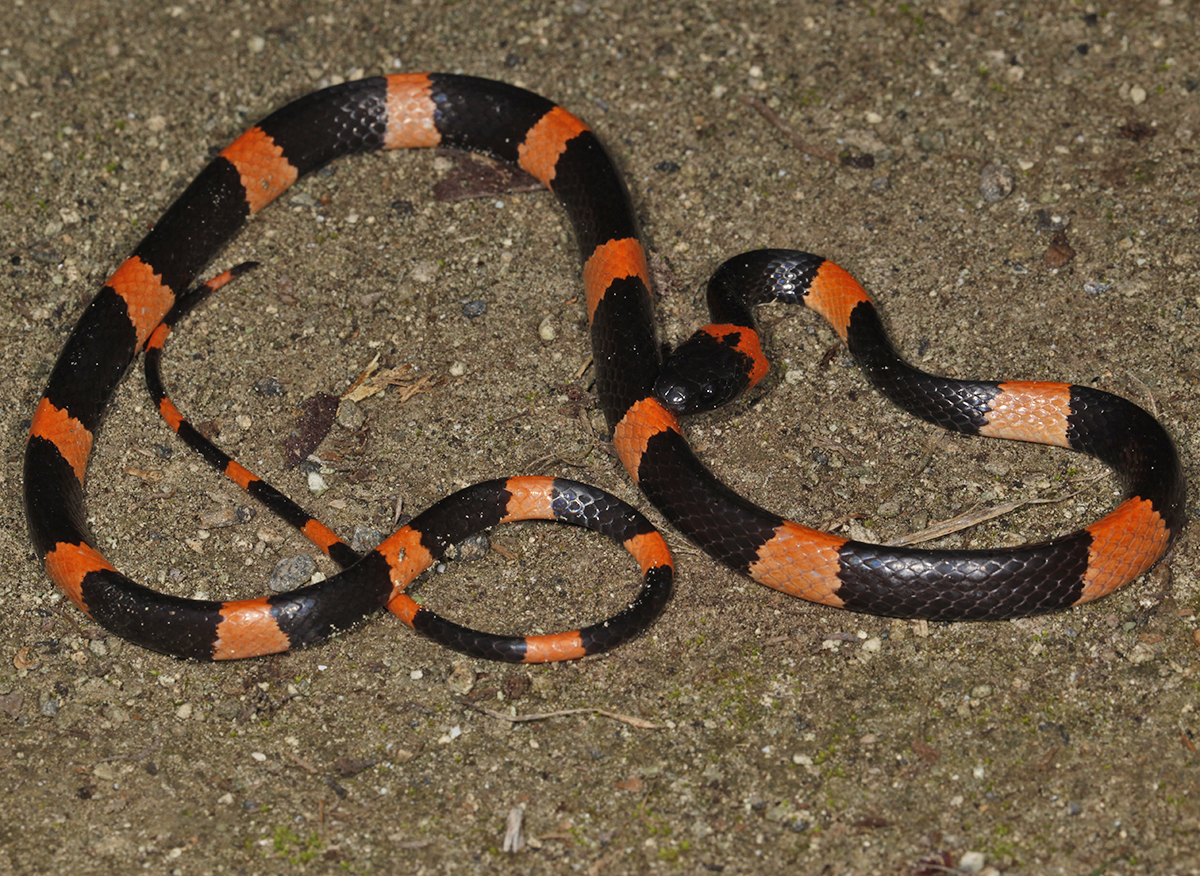Dipsas brevifacies
(COPE, 1866)
Yucatán, Mexico. June 30, 2016.
Most of the dark snakes with orange bands seen on Yucatán roads at night are the terrestrial snail-sucker, Tropidodipsas sartorii, but on occasion, this species turns up. D. brevifacies is the more slender snake, and its head looks less like a coral snake than T. sartorii. Still, it’s always best to look carefully before snatching up any snake in the dark of night.
Whence the name, ‘thirst snake’? The genus Dipsas was erected in 1768 by the Austrian/Italian Josephus Nicolaus Laurenti. Apparently Laurenti was familiar with the writings of Lucian. In the second century AD, Lucian of Samosata writes to a friend concerning the southern parts of Libya:
“….but the direst of all the reptiles bred in the sand is the dipsas or thirst-snake; it is of no great size, and resembles the viper; its bite is sharp, and the venom acts at once, inducing agonies to which there is no relief. The flesh is burnt up and mortified, the victims feel as if on fire, and yell like men at the stake. But the most overpowering of their torments is that indicated by the creature’s name. They have an intolerable thirst; and the remarkable thing is, the more they drink, the more they want to drink, the appetite growing with what it feeds on. You will never quench their thirst, though you give them all the water in Nile or Danube; water will be fuel, as much as if you tried to put out a fire with oil….”
Laurenti mentions Dipsas and perhaps Lucian (‘Lucanus’) in his famous treatise on venomous reptiles and amphibians (Specimen Medicum, Exhibens Synopsin Reptilium Emendatam cum Experimentis circa Venena, 1768). I don’t know why Laurenti hung Dipsas on this group of new world snail suckers, but my guess is that he was paying homage to Lucian.
My Flickr album for this species is here.
My Flickr album for Yucatán 2016 is here.
HerpMapper records for this species are here.





